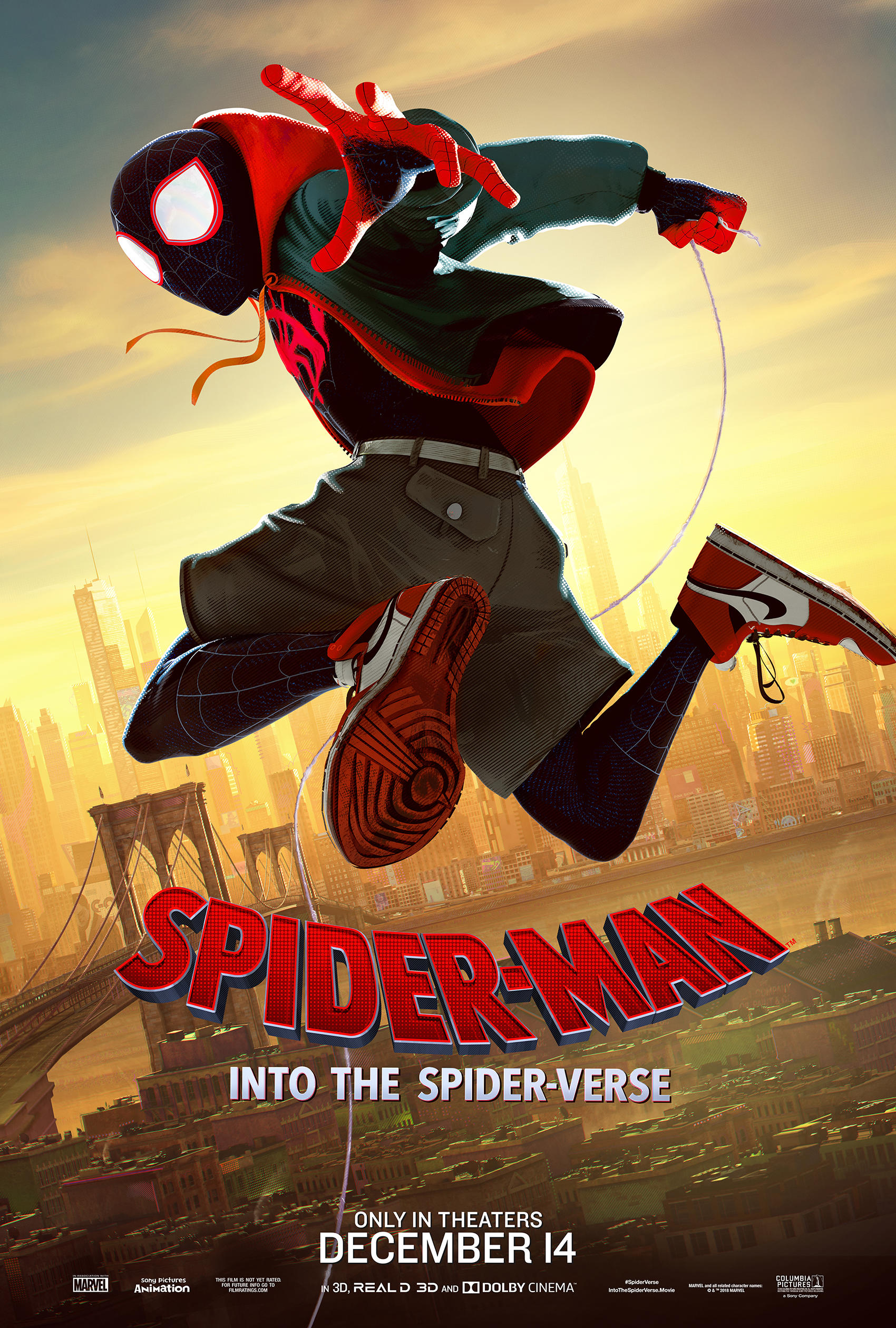
Photo Courtesy of Marvel.com CC/BY
Movie Review: Spider-Man: Into The Spider-Verse ensnares viewers with animation over plot
In a time of superheroes caught in the mainstream of pop-culture, the animated film, Spider-Man: Into The Spider-Verse made its way into people’s watch lists and snagged three awards shortly after its release. The movie follows the typical Spider-Man-trope: the protagonist, teenage Miles Morales, gets bitten by a radioactive spider and develops the “spidey senses” his future alter ego is known for. The twist is that his typical hijinks now involve inter-dimensional travel and different versions of the original Spider-Man.The premise of the movie is cute. Due to the actions of a well-intentioned, yet malicious supervillain, a portal is opened that causes several alternate universes to overlap; in the process, several “Spider-Man” counterparts get dragged into the “Ultimate” universe where Miles resides. It is a situation where different versions of an admired character get to interact and bring out the different layers of said character through its alternate counterparts. Nonetheless, the whole idea of how the Spider-Verse came to be was not explained. This is upsetting because as a result, the exposition is lazy and does not allow the audience to take the plot seriously. The “Spider-Verse” or exploration of alternate dimensions seem to be the focal point of the movie, especially considering the fleshed-out origin story provided for each alternate universe Spider-person. However, the same level of depth is not provided for the portal and how it was developed, which creates a weak foundation for the plot.
Too much of the plot can be described as convenient, and certain details are added with no further explanation other than to accelerate the flow of the plot. One example is when Spider-Gwen, a female version of Spider-Man, is transported into Miles’ dimension only a week before he adopted his alternate identity, whereas other counterparts did not get to interact with Miles beforehand. This was most likely arranged to angle their relationship as a possible romantic one, but it was not executed appropraiately. Other miscellaneous details include when all the “Spider-Man” counterparts shoot their webs in the air to swing to the next scene, despite there being no surface for the web to cling to. This may be to play into the idea of the movie being cartoon-like, which typically does not follow logic, but in that case the entire movie should adhere to that same nonsensical standard.
That is not to say that the movie is terrible overall, because between the animation and incorporated details, it deserves the recognition it has been given. The graphics in themselves are fantastic and showed the painstaking dedication to detail. In certain cases, the panels were blurred out to mimic classic comic-book style, where designs would be misprinted, so as to trigger artists’ and comic book lovers’ nostalgia. Other incorporated elements are also admirable. It is noteworthy how Marvel is taking a step in the right direction regarding the normalization of cultures. Miles Morales is the first black Spider-Man, so he is a big deal, to say the least. He brings to the table his Afro-Latino heritage and his bilingual tongue, in addition to his alternate persona, which is refreshing. It is not outright, obnoxious representation through fiction, which opens the door for future incorporation of biraciality/mixed culture without it being a tagline.
Furthermore, I would say that Spider-Man: Into The Spider-Verse is a nice movie that is enjoyable, so long as you put more emphasis on the graphics rather than the plot. While still charming and heartwarming, it is not exactly something you would watch more than once due to the blatant plot holes.